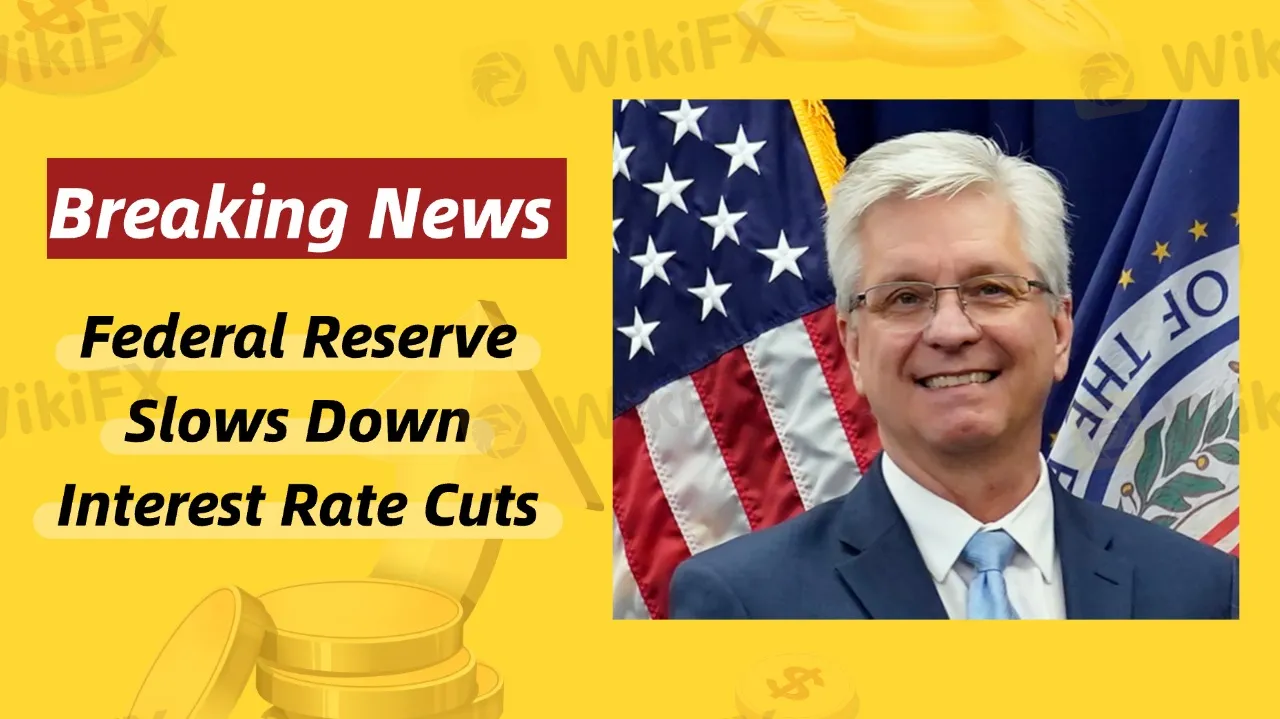简体中文
繁體中文
English
Pусский
日本語
ภาษาไทย
Tiếng Việt
Bahasa Indonesia
Español
हिन्दी
Filippiiniläinen
Français
Deutsch
Português
Türkçe
한국어
العربية
Breaking News! Federal Reserve Slows Down Interest Rate Cuts
Abstract:The latest Federal Reserve meeting minutes show that Fed officials are generally concerned about the upward risks to inflation, suggesting that future rate cuts may slow down.

The US dollar has risen for the second consecutive trading day, with the Dollar Index briefly surpassing the 109 mark, rising 0.4% to 108.99, reflecting the market's attention on the Fed's policy outlook.
Why the Rate Cuts May Slow Down?
Fed officials noted that due to stronger-than-expected economic data, especially the performance of the labor market, and potential policy changes (such as trade and immigration policies), inflationary pressures could persist. These factors led some officials to believe that inflation could prove to be more persistent than previously anticipated, thus making them more cautious about continuing to cut rates. While the Fed still expects to bring inflation down to its 2% target over the next few years, the potential risks to inflation remain difficult to fully mitigate at this point.
Additionally, officials have expressed particular concern over the trade protectionist policies and immigration policies that the Trump administration might implement. These policies, such as tariffs and stricter immigration requirements, could increase labor costs and the prices of goods, complicating efforts to manage inflation.
In conclusion, despite the Fed's rate cuts, officials remain generally concerned that the risks of inflation are not fully eliminated, and therefore, future rate cuts are likely to slow. The market has responded by showing strong demand for the US dollar, which has driven the Dollar Index higher. The Fed's future monetary policy decisions will depend on changes in economic data, especially inflation and employment figures, and investors should closely monitor upcoming economic reports.

Disclaimer:
The views in this article only represent the author's personal views, and do not constitute investment advice on this platform. This platform does not guarantee the accuracy, completeness and timeliness of the information in the article, and will not be liable for any loss caused by the use of or reliance on the information in the article.
Read more

Why Your Stop Loss Keeps Getting Hit & How to Fix It
Many new traders run into the same frustrating problem. They analyse the market, place a trade, and watch the price go against them just enough to hit their stop loss. Then, like a bad joke, the price moves exactly in their predicted direction. Read this article to learn how to fix this issue for good!

Safe-Haven Surge: Gold Shines Amid Market Turmoil
Rising geopolitical tensions fuel a flight to safety, propelling gold past key resistance and positioning it as a top-performing asset in today’s volatile market.

Forex Trading Challenges in India
Explore this guide to understand the challenges that deter India's forex market from unleashing its true potential.

The Deepening Roots of Forex Scams in India
Check out how forex scams in India have expanded beyond banks and unregistered brokers to include the informal gang racket duping investors every day.
WikiFX Broker
Latest News
Advantages of Using EA VPS for Trading - Detailed Guide
$1.1 Million Default Judgement Passed Against Keith Crews in Stemy Coin Fraud Scheme
MetaQuotes Rolls Out MT5 Build 5120 with Enhanced Features and Stability Fixes
Indian "Finfluencer" Asmita Patel Banned: SEBI Slaps Charges on Her Company, AGSTPL
HDFC Bank's Green Push: Empowering 1,000 Villages with Solar Energy
Safe-Haven Surge: Gold Shines Amid Market Turmoil
Why Your Stop Loss Keeps Getting Hit & How to Fix It
How Money Moves the World | Why Finance Matters for Everyone
IG Japan Issues Trading Alert as Israel‑Iran Tensions Escalate
Investor Alert: SEBI Introduces New UPI Safety Net Against Scam Brokers
Currency Calculator


